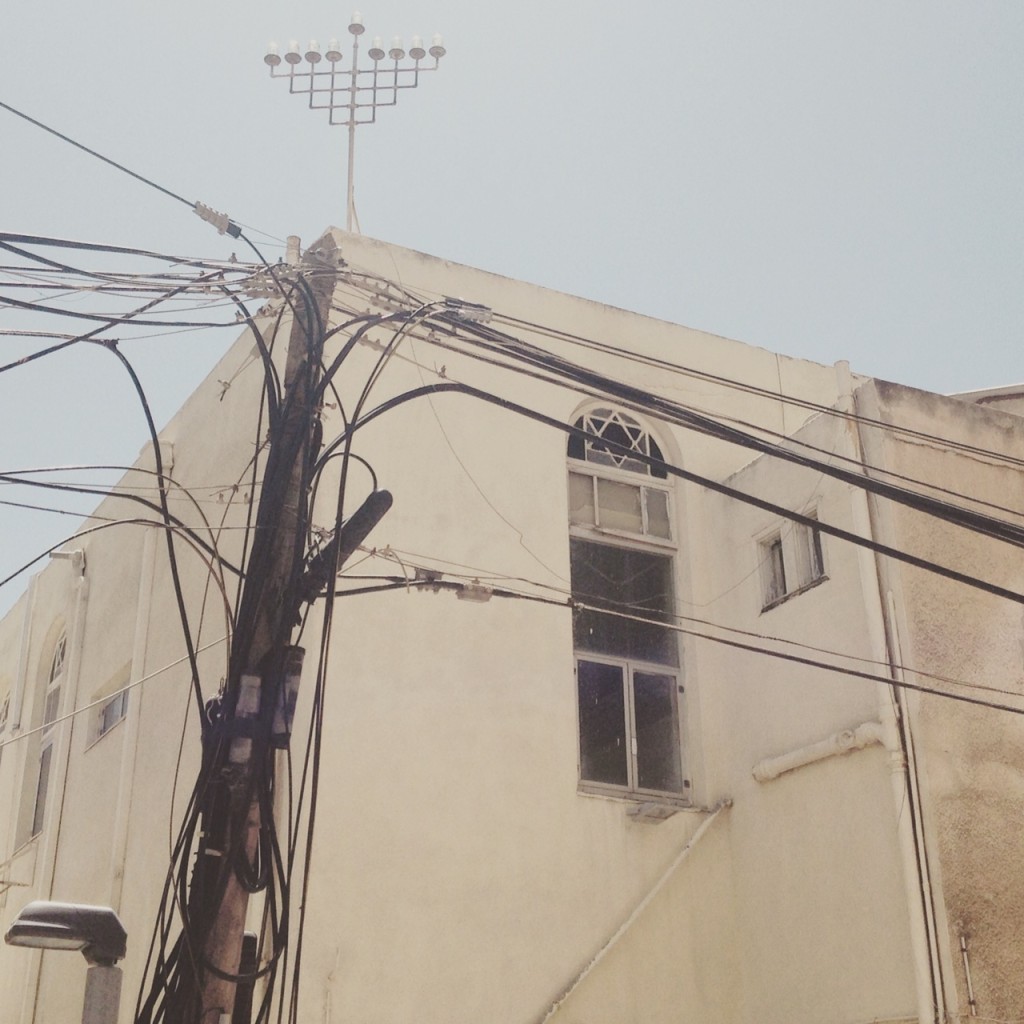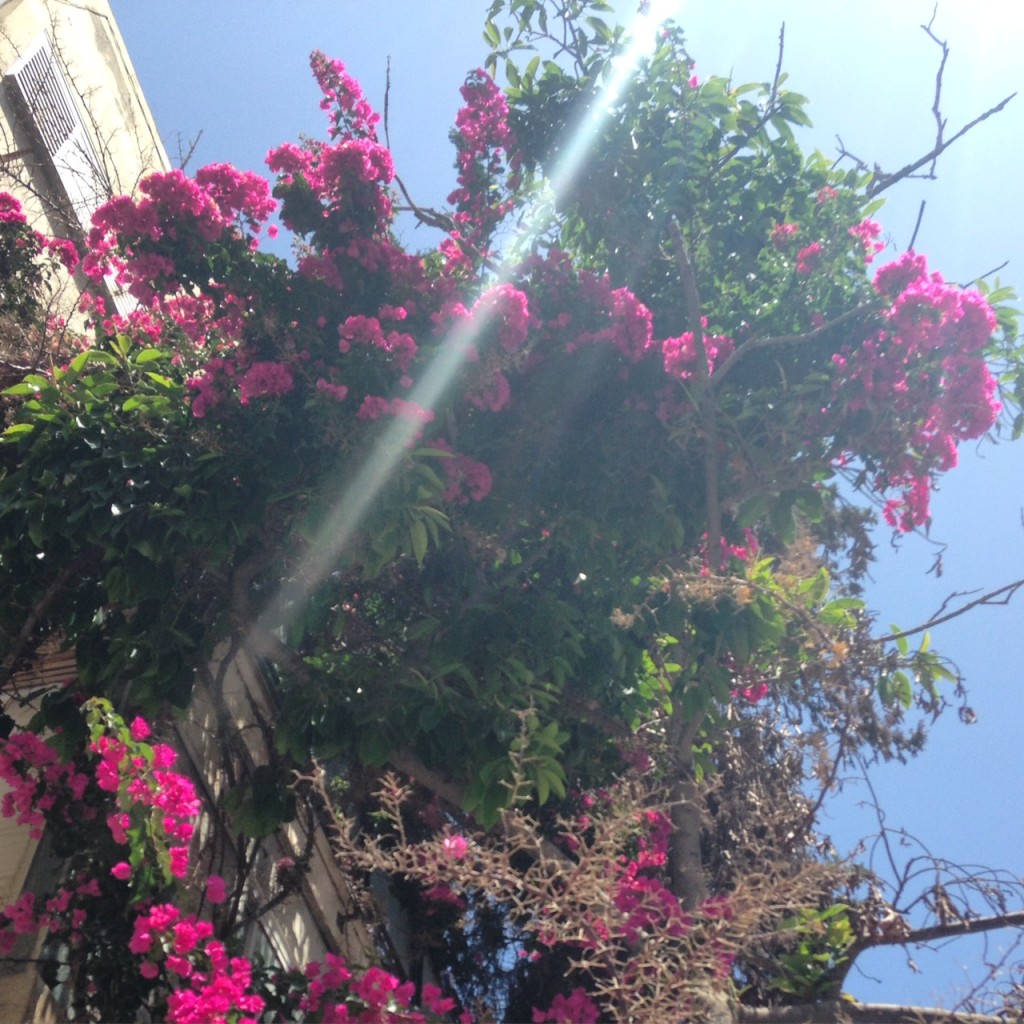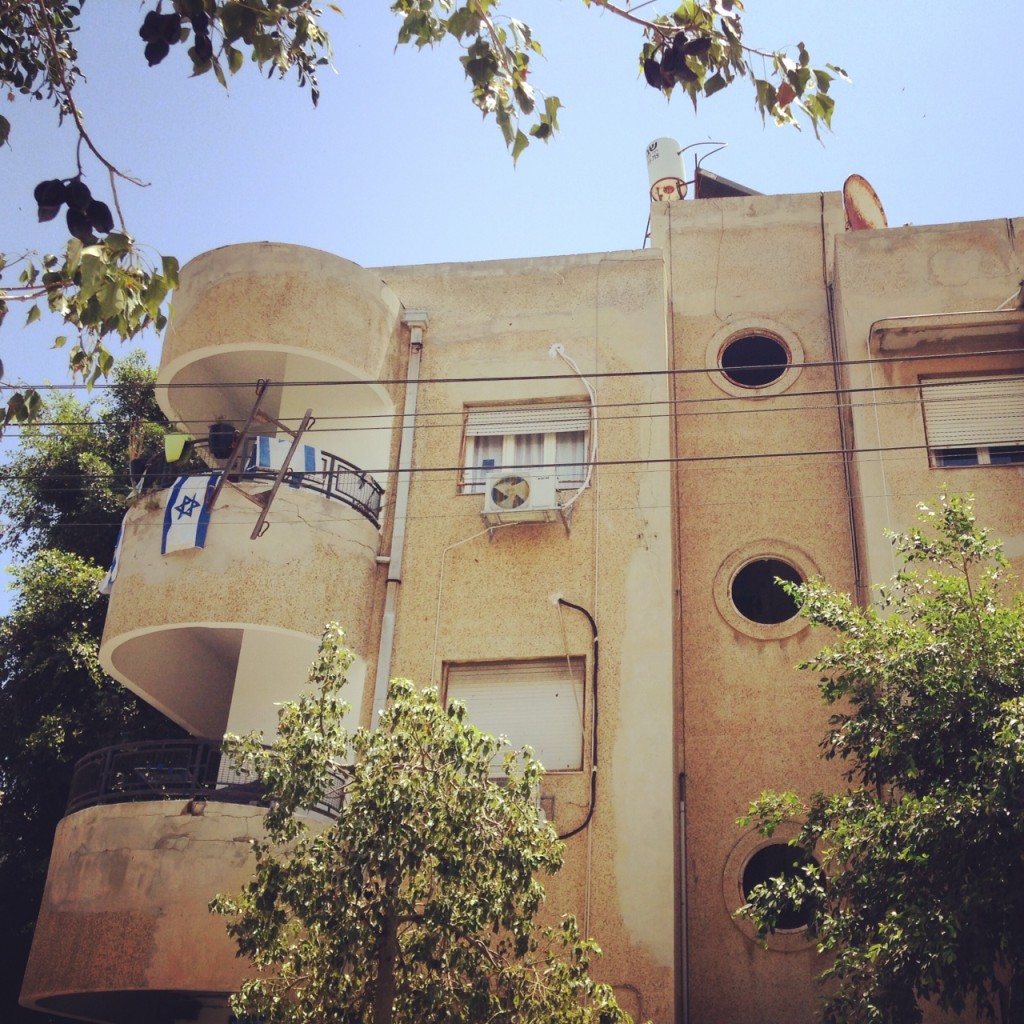Lord Byron, Jean Jaurès and Emile Zola streets in Tel Aviv
Thank you Marlene Ferron for the translation of my promenade Rues Lord Byron, Jean Jaurès, Emile Zola
I decided to devote this walk to a residential block in the center of Tel Aviv, one framed by the streets Dizengoff, Ben Gurion, Ben Yehuda and Gordon but without devoting myself to the limits themselves. Small quiet streets. This is an area I know well, where I have lived for more than ten years and to which I came back fifteen years later to create, at the corner of Gordon and Dizengoff, the first quality tea shop in Israel, Palais des Thés.
What a pleasure to walk, to be able to put one foot in front of the other without thinking, while raising one’s eyes to the sky to surprise the cutting of a palm tree, the regularity of a solar-cans line, so typical of the Israeli sky. This morning I heard the Gadi Yarkoni’s radio interview, who has been newly elected head of the Eshkol Regional Council. He was seriously injured during the summer of August 26, 2014 under the missiles and the Tsouk Eitan (Unshakable Rock) operation. He lost two of his friends and both his legs. Less than a year later, he made his election campaign – standing – on his two artificial legs. A warm voice, neither frustration nor bitterness, just the desire to make hisenvironment a better one. I admire him. He passionately describes the joy of living in this region, the nature, the flowers, the farming life, the quality of teaching, the friendliness and the good nature of the people. That is to say, most of the time, when the cannons do not rumble, when the rockets do not fall around.
I begin my journey to the urban area of Ben Yehuda and Nathan HaHacham, Nathan the Wise, after the name of the play by Lessing, the German author of Enlightenment period. Nathan, the main character of the play written in 1779 was inspired by Moses Mendelssohn, the German Jewish philosopher of the eighteenth century. In 1749, Lessing had written « The Jews » to try and break numerous prejudices. Two hundred and fifty years later, and after the Holocaust, we must still tackle the same task. I think of the play by Jean-Claude Grumberg, « Being or not », with Pierre Arditi, who has the same ambition, twisting the neck to the many preconceived ideas about Jews which outcrop. Outcrop, too nice a word for this mire.
Initially, the street was called Lessing but due to the confusion that ensued since near Kikar HaMedina there was a Lissin street from a Yiddish poet, who’s name was also given to the Beth Lessin Theater. In order to still honor the philosemite playwrighter, the street was baptized with the name of one of his works. There, my next walk is found, I will stroll along Moses Mendelssohn‘s street close by Spinoza Street.
I enter the « Gordon 2 » Art Gallery, the little sister of Gordon Gallery, which is close to Ben-Yehuda street. The artist is busy hanging pictures. I turn right on Lord Byron Street, the Romantic English poet, champion of the Irish and Greek cause and a Zionist before the hour. He wrote the booklet in 1814 » The Isaac Nathan’s Hebrew Melodies »; Isaac Nathan, whose music was based on the liturgy of the synagogue and where we find poems like « On the rivers of Babylon we sat and wept… », or « On the day of the destruction of Jerusalem by Titus ».
I am in awe of the Palm-Trees of Tel Aviv. A palm tree that grows in the neglected courtyard of a building, some very high and thin, some very bewhiskered, all make me hally. In the poem « The Wild Gazelle », Lord Byron wrote:
Happier the palm tree that shades those plains,
Than the scattered children of Israel!
Once he pushed his roots
It just sits there in his solitary grace:
He can not abandon the place of his birth;
He will not live on foreign soil.
But us, we must wither in a wandering life,
Die in distant lands.
Where lie the ashes of our fathers,
Ours will never rest.
Our temple has not retained one single stone,
And Affront sits on the throne of Zion.
How lucky I, as a Jew, have to live at this time when Israel exists, where palm trees and I are anchored in the sands of Tel Aviv.
Israel has become such a bad object in the eyes of Nations that we forget the fate that awaited the Jews before the creation of the country, that we forget that it is a miracle.
At the end of Lord Byron the street, when it changes to Korolenko, there is a synagogue. I enter the court, I go around and I discover for the first time that there is a passage that connects Byron Street to 126 Ben Yehuda Street. Minimal discovery, but it delights me. The synagogue is open, I steal a picture of a single man sitting inside, this is rare one only man sitting in a synagogue.
Vladimir Korolenko was a writer and journalist of Ukrainian origin, opposing tsarism, he was exiled to Siberia. He was a staunch defender of human rights. He denounced the Beilis trial.
From a writer and journalist to another, here I am in the Rue Emile Zola, on familiar ground! I check, there is also a Dreyfus Street in Tel Aviv, in the neighborhood of Kiryat Shalom, south of the city, really off the beaten track.
I turn right into Ben Gurion to admire the beautiful Bauhaus house in the corner, including the glass canopy of the staircase and walk back. A ray of sunlight goes through the canopy of an old bougainvillea. Jean Jaures street crosses the rue Emile Zola. The song of Jacques Brel « Why did they kill Jaures? » comes to my mind and I hum it. What an honour, this is one of the most beautiful streets of Tel Aviv, a shady avenue of ficus trees whose branches are joining vault like. A beautiful house looking like a boat with windows like portholes. I continue on Emile Zola which at the corner becomes, Nathan Hahacham. I go around the small garden where I spent quite some time with the children.
It’s amazing, I never noticed that all the streets of this neighborhood were a tribute to the men of good will, who fought for tolerance and respect for others, often the other being the Jew.
At 14 Rue Nathan Hahaham a commemorative plaque in honor of the poet Benjamin Ungar, who was the president of the cantors association, of the Hazzanim of Israel. I turn right into Dov Oz, admire the modern- style house at number 35, the vegetation has grown and hides its beautiful lines, I turn around and notice a typical telavivian perspective: Solar-cans, blue sky, flat roof and two crowns of palm-trees, along a long and thin stem. I jump, someone taps me on the shoulder, that’s my son Dan: What have you found out Mom?





